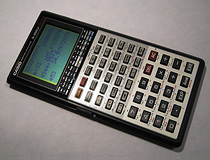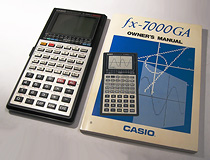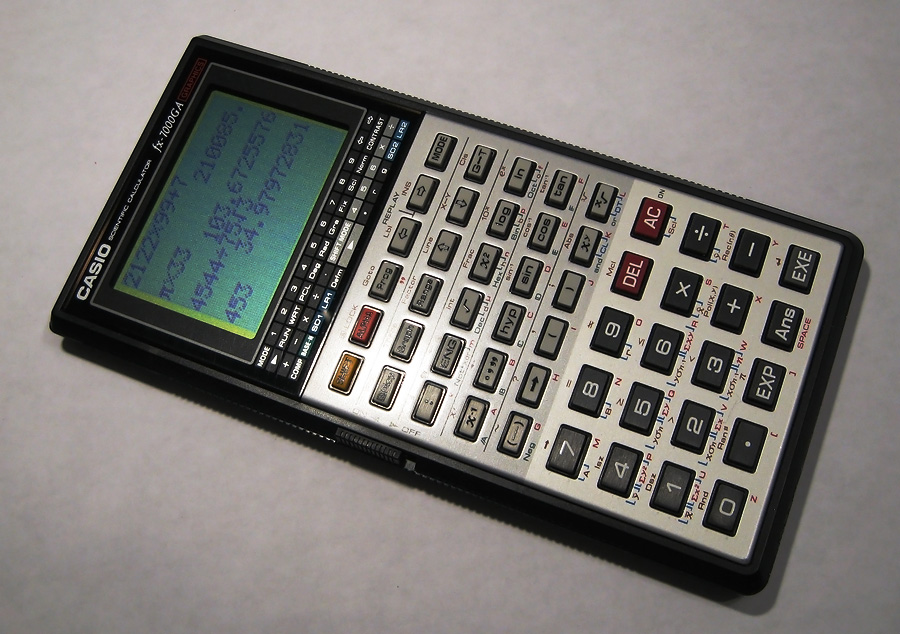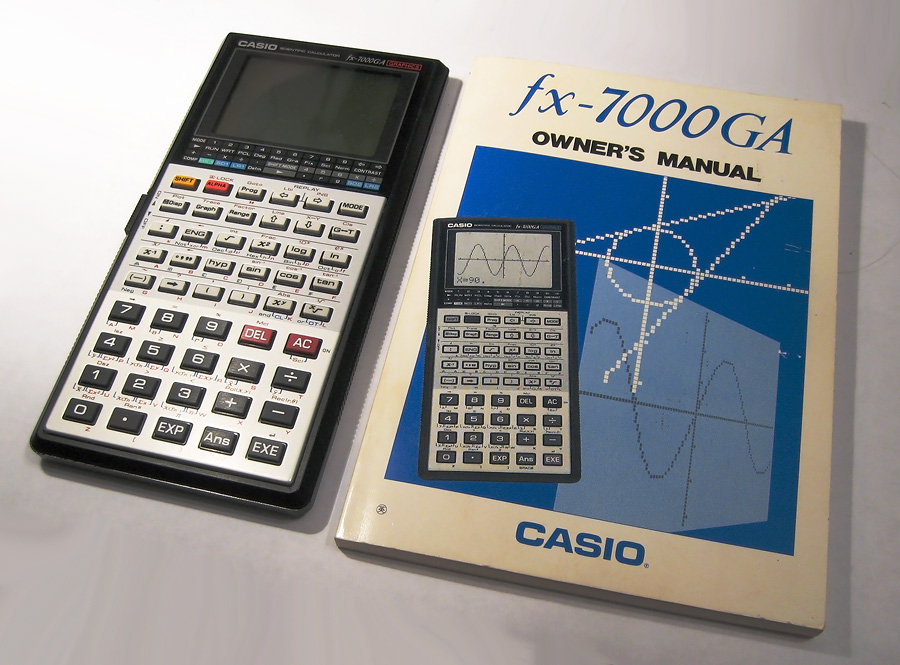In 1985, Casio introduced the world's first handheld graphing calculator, the FX-7000G. Unlike most other calculators of the era which used segmented LCDs, the FX-7000G features a 96x64 dot matrix LCD which can display both numbers and graphics. The FX-7000G was also programmable, and included 422 bytes of on-board memory for storage of user-made programs. The FX-7000G was a revolution in handheld calculators, and a decade of subsequent machines produced by both Casio and Texas Instruments were all derived from the FX-7000G basic form factor.
Casio also produced a specialized variant of the FX-7000G, the OH-7000G, designed for instructional use with an overhead projector. The OH-7000G has a heat-resistant, translucent LCD display as well as various cosmetic differences, but is otherwise functionally identical to the FX-7000G.






 Return to Calculators and Adding Machines
Return to Calculators and Adding Machines